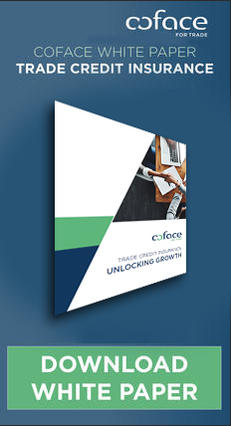

Argentina
Synthesis
major macro economic indicators
| 2020 | 2021 | 2022 | 2023 (e) | 2024 (f) | |
|---|---|---|---|---|---|
| GDP growth (%) | -9.9 | 10.7 | 5.0 | -1.5 | -2.5 |
| Inflation (yearly average, %) | 42.0 | 48.4 | 72.4 | 127.8 | 220.0 |
| Budget balance (% GDP) | -8.5 | -4.2 | -4.5 | -4.7 | -2.0 |
| Current account balance (% GDP) | 0.8 | 1.5 | -0.6 | -3.0 | 2.0 |
| Public debt (% GDP) | 103.8 | 80.5 | 85.2 | 94.0 | 97.0 |
(e): Estimate (f): Forecast
STRENGTHS
- Large economy and domestic market
- Major agricultural player (notably soya, wheat and corn)
- Large shale oil and gas, gold and lithium reserves
- Education level higher than the regional average
WEAKNESSES
- Weak fiscal accounts and dependence on IMF financing
- Restrictions to access the official exchange rate market due to the very low level of foreign currency reserves
- Dependence on agricultural commodity prices and weather conditions
- Sticky and skyrocketing inflation
- High domestic political and social tensions
- Poverty climbed in early 2024 (affecting around 57.4% of the population)
- High labour informality (around 47% of total workers)
RISK ASSESSMENT
A second year of recession
The economy is expected to sink further into recession in 2024. While in 2023 the dry weather strongly affected agricultural production, macroeconomic imbalances will be the main drag in 2024. Household consumption will shrink, primarily hampered by the significant erosion of purchasing power, with the substantial and sticky inflation reaching even higher levels this year. The marked increase in consumer prices will be mainly fueled by the pass-through of the sharp devaluation of the ARS in December 2023 and by the correction of transport, fuel, and energy prices. Meanwhile, gross fixed investments are also expected to contract, squeezed by the government’s decision to freeze public capital expenditure and as private investors remain cautious in the current fragile political and economic environment. Furthermore, public expenditure will also shrink as policymakers move forward with fiscal consolidation. Last, exports are expected to strongly rebound thanks to the normalisation of agriculture foreign sales volume (owing to the recovery of soybean, corn and wheat harvests). This should outweigh the lower growth trends expected in the main export markets (Brazil and China) and relatively weaker prices in agricultural commodities.
External account to switch back to a surplus and durably uncertain fiscal consolidation
In 2024, the current account will return into a surplus, mainly driven by the trade balance, which will move back into positive terrain. Growth in net exports will be underpinned by the recovery of agricultural exports and a sharp import compression (amid a depressed domestic demand). Furthermore, the energy trade balance is expected to flip into a surplus, thanks to the progress in a key gas pipeline construction. On the financing side, FDI will remain low due to economic and political uncertainty. Meanwhile, foreign currency reserves remain at critical levels, despite the improvements seen in the initial months of the new government. The central bank accumulated USD 6.2 billion in foreign exchange reserves from 10 Dec 2023 until the end of February 2024. In addition, the IMF also approved a net disbursement of USD 2.9 billion (as part of the USD 44 billion loan programme). As a result, gross reserves stood at USD 27.6 billion at end January 2024, while net reserves were still estimated at negative USD 4.7 billion. Importantly, the government´s intention to lift capital controls by the end of 2024 seems challenging. In fact, the exchange rate gap with the parallel rate has narrowed (to average of 20% in early March 2024, from 55% in January 2024). However, total outstanding import obligations remain high (USD 42.6 billion in December 2023 or USD 13.6 billion above the 2017-2021 average norm), leading the central bank to launch three series of dollar-denominated bonds to be bought with pesos. They will allow importers to access the official foreign exchange market on maturity (varying between 2025 and 2027). In addition, in 2024, Argentina’s consolidated public sector faces external debt servicing costs (amortisation + interest) estimated at USD 15.4 billion (including USD 8 billion to the IMF) versus USD 6.5 billion in disbursements from the IMF.
On the fiscal front, while authorities are pursuing a nominal fiscal balance in 2024, it will be very challenging to achieve it. The government’s initial plan was to promote an adjustment notably through lower expenditure (including cut in subsidies, lower transfers to provinces, and the suspension of uninitiated public works), but also based on increasing revenues (through higher import and export taxes, and the scrapping of a recent income tax reform, among others). However, the failure to pass the so-called omnibus bill prevented an increase in tax revenue of around 1.4% of GDP (including 0.4% for not reversing the new income tax rule). As of January 2024, policymakers have relied notably on the real erosion of expenditures (amid the escalating inflation) to improve the fiscal balance, but this is unsustainable. Looking forward, the deeper economic recession in 2024 and the expected continued appreciation in real terms of the official currency will take a toll on tax collection despite a projected rebound in agriculture revenues. Furthermore, implementing a substantial cut in transfers to provinces is politically challenging. Similarly, containing demands for higher pensions and wages could prove difficult.
The new government suffered the first setbacks
The libertarian Javier Milei was sworn in as Argentina’s new President in December 2023. An economist and former Member of Parliament (2021 - 2023), he gained traction in the elections as an outsider, promising to use a chainsaw on the country's ailing economy. He stated that it would require a little more time than the year of 2024, to make reforms in the financial system so that it is suitable for a dollarised system. The incoming government promptly allowed the local currency to depreciate by 54% against the USD and it was announced a monthly devaluation rate of 2% from then on. With regard to fiscal consolidation, an ambitious target of achieving nominal balance by 2024 was revealed. Moreover, amid a weak base in Congress, authorities implemented the so-called Decree of Necessity and Urgency (DNU) that listed 366 measures to deregulate the economy three days after taking office. However, the labour reform part of the DNU, which would have made it easier to fire employees, was overturned by the courts as unconstitutional at the end of January 2024. More important, in February 2024, the so-called omnibus bill, with 664 articles that originally included fiscal measures, provisions to allow the privatisation of state entities and to give more powers to the president (among others) was knocked back in the Lower House. Following the defeat, political tensions escalated between the administration, provincial governors and legislators. As a result, in early March 2024, Milei summoned governors to endorse a wide-sweeping national agreement via a 10-point "social pact" to be signed on 25 May. However, it would be subject to the approval of a fresh draft of the omnibus law and a fiscal package. Looking to the social front, the risk of tension will remain high throughout the year as inflation rises and public spending is cut. The government has already faced some protests and strikes against its economic agenda. Concerning foreign policy, despite having toned down his criticism on Brazil and China, Milei refused the invitation to join the BRICS groups from 2024. He has made alliances with the US and Israel a priority.
Last updated: March 2024
Payment
The most common payment instruments in local commercial transactions are:
- cash (for low-value retail transactions);
- bank transfers;
- cheques (ordinary cheques, deferred payment cheques or other types).
In case of default, these cheques represent an executable legal document that facilitates a fast track legal proceeding.
For international commercial transactions, the most common payment instrument is Bank transfer via SWIFT. Since December 2019, the new government has implemented restrictions on foreign exchange and fund transfers from Argentina. Payments to related companies abroad are not allowed.
Debt Collection
Amicable phase
Out-of-court settlement negotiations are focused on the payment of the principal, plus any contractual default interest that may be added. Argentine regulations provide alternative dispute resolution methods, such as mediation, which is mandatory prior to commencement of any judicial process. At this stage, it is advised to obtain a notarised acknowledgement of debt signed by the debtor, or notarized payment plan agreement signed by both parties. Under amicable negotiation, fees payable only apply to recoveries obtained.
Legal proceedings
Argentina is a federal republic with 24 independent judicial systems and national judicial system. The highest court in the country is the National Supreme Court.
Regarding debtors abroad, Argentine courts only have jurisdiction when debtors have assets in Argentina (in which case insolvency proceedings will only involve such assets) or when their principal place of business is in Argentina.
The Argentine Civil and Commercial Code classifies proceedings into two types: ordinary proceedings (juicio ordinario) and executory or fast track proceedings (juicio ejecutivo). Ordinary proceedings usually last between one and four years. If applicable, an appeal may be filed for the Court of Appeals to hear the case.
Executory processes are simplified and prompt proceedings that mainly consist of claimants’ request for the execution of debtors’ assets to obtain payment of a debt. They apply when creditor has documents known as enforceable instruments (titulos ejecutivos), such as public instruments, private instruments signed by the concerned party (debtor or guarantor) and legally acknowledged, bills of exchange, checks or credit invoices. Contrary to ordinary proceedings, it is not necessary to provide proof of the debt. The judgment is delivered between approximately six months and two years.
Costs include a court tax (3% of the amount in dispute to be paid by claimants upon commencing proceedings), and lawyers’ fees. The prevailing party is entitled to recover its costs, including attorneys’ fees (subject to court approval).
All documents (original or notarised copies) submitted to the court must be (i) apostilled (for member countries of the 1961 Hague convention, which includes Argentina), and (ii) authenticated by the Argentine consulate in the issuing country. All non-Spanish documents must be translated by a certified translator registered in Argentina.
Enforcement of a Legal Decision
For local judgments, final decisions are initially considered enforceable. However, if a decision has been appealed, it can be partially enforceable in relation to the part of the judgment that is final. In principle, any of the debtor’s assets can be seized (including but not limited to property, trademarks, and accounts receivable from third parties and shares).
Insolvency Proceedings
There are three insolvency proceedings:
Out-of court reorganization
Acuerdo preventivo extrajudicial (APE) is a proceeding in which the debtor and a majority of unsecured creditors enter into a restructuring agreement. This
agreement must be submitted by the debtor to an Argentine court for it to become enforceable. In practice, out-of-court agreements provide a series of conditions that must be complied with, including a minimum threshold of consenting creditors.
Reorganization
Concurso preventivo is a reorganisation proceeding that can be initiated voluntarily by an individual or entity, who must submit proof of their inability to pay their debts. Debtors must file a petition to the court requesting relief under bankruptcy law. The court will appoint a trustee. All creditors must file evidence of their proof of claim with the trustee (verificación de créditos). Debtors must submit a proposal for reorganization and must obtain creditors’ approval during an “exclusive period” of 90 days, with the possibility of an extension. If the proposal is approved by the majority, the judge reviews the terms of the plan prior to approving it. Upon homologation by the court, the reorganization plan becomes effective to all unsecured creditors (even those who have not agreed to it). A special payment offer can only be proposed and approved for secured creditors. If the proposal is not approved by the required majority (51%), debtor bankruptcy may follow. The process generally takes between one and two years, depending on the volume and nature of debt being renegotiated and the size of the debtor.
Bankruptcy
Quiebra is initiated when a reorganization proceeding fails, either voluntarily (by the debtor) or involuntarily (by the debtor’s creditors’ request). The petitioner must show that the company is insolvent or that it has entered into a “suspension of payments” status. In case of an involuntary bankruptcy, after the petition has been filed with the relevant court and all necessary evidence is presented, the court will summon the debtor to provide an explanation of the reasons why payments of the obligations in favour of the petitioning creditor have not been made and to prove that the debtor is solvent. If the debtor is unable to do so, the court will declare the debtor bankrupt. Unlike reorganization, bankrupt debtors lose control of the administration of their assets. A trustee is appointed in order to preserve and administer the debtor’s property. As a result, all payments to creditors and debtor must be made through court. All claims and proceedings against the debtor are automatically stayed as from the date of the order that determines debtor’s bankruptcy. All creditors must submit their proof of claims for payment. Once the assets available and the amounts owned to each creditor are determined, the trustee liquidates the assets and proceeds with the distribution of repayment to creditors.







